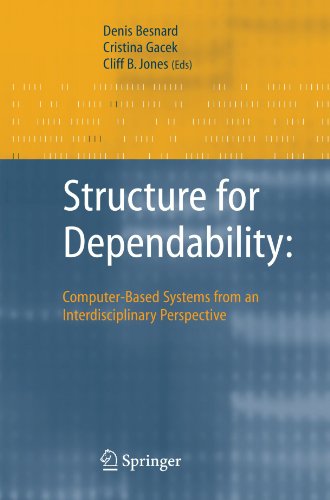

Most ebook files are in PDF format, so you can easily read them using various software such as Foxit Reader or directly on the Google Chrome browser.
Some ebook files are released by publishers in other formats such as .awz, .mobi, .epub, .fb2, etc. You may need to install specific software to read these formats on mobile/PC, such as Calibre.
Please read the tutorial at this link: https://ebookbell.com/faq
We offer FREE conversion to the popular formats you request; however, this may take some time. Therefore, right after payment, please email us, and we will try to provide the service as quickly as possible.
For some exceptional file formats or broken links (if any), please refrain from opening any disputes. Instead, email us first, and we will try to assist within a maximum of 6 hours.
EbookBell Team

4.8
54 reviews
ISBN 13: 9781846281105
Author: Denis Besnard, Cristina Gacek, Cliff Jones
Computer-based systems are now essential to everyday life. They involve both tech- cal (hardware/software) components and human beings as active participants. Wh- ever we ?y aboard an aircraft or withdraw money from a cash point, a combination of humans, machines and software is supporting the delivery of the service. These systems and many others bene?t from the miniaturisation and cost reduction of the hardware which has made it possible for computers to be embedded everywhere. An equally remarkable development is the software involved: today, systems are built which were literally unthinkable twenty or thirty years ago. Measured in terms of their function, the productivity of their creation has also advanced enormously (largely - cause of the software infrastructure). Even the dependability of the best of todays so- ware is praiseworthy when one considers the complexity of the functionality provided. Solid engineering and the increasing adoption of methods based on ?rmly established theory are to be thanked here. However, in large and complex systems, there remain major challenges to achieving dependability when complex interactions exist between technical and human components. Large and complex things are understood as assemblages of simpler components: the way these components ?t together is the structure of the system. Structure can be real and physical, or a subjective mental tool for analysis.
Introduction
The Role of Structure: A Dependability Perspective
The Role of Structure: A Software Engineering Perspective
Structuring Evolution: On the Evolution of Socio-Technical Systems
Time Bands in Systems Structure
Procedures, Programs and Their Impact on Dependability
Cognitive Conflicts in Dynamic Systems
Architectural Description of Dependable Software Systems
Computational Diagrammatics: Diagrams and Structure
Ethnography and the Social Structure of Work
Faults, Errors and Failures in Communications: A Systems Theory Perspective on Organisational Structure
Security Implications of Structure
The Structure of Software Development Thought
On the Use of Diverse Arguments to Increase Confidence in Dependability Claims
Qualitative Analysis of Dependability Argument Structure
structure dependence
structure dependant
7. dependability
dependability/reliability
7 structures
6. dependability
Tags: Denis Besnard, Cristina Gacek, Cliff Jones, Dependability, Computer